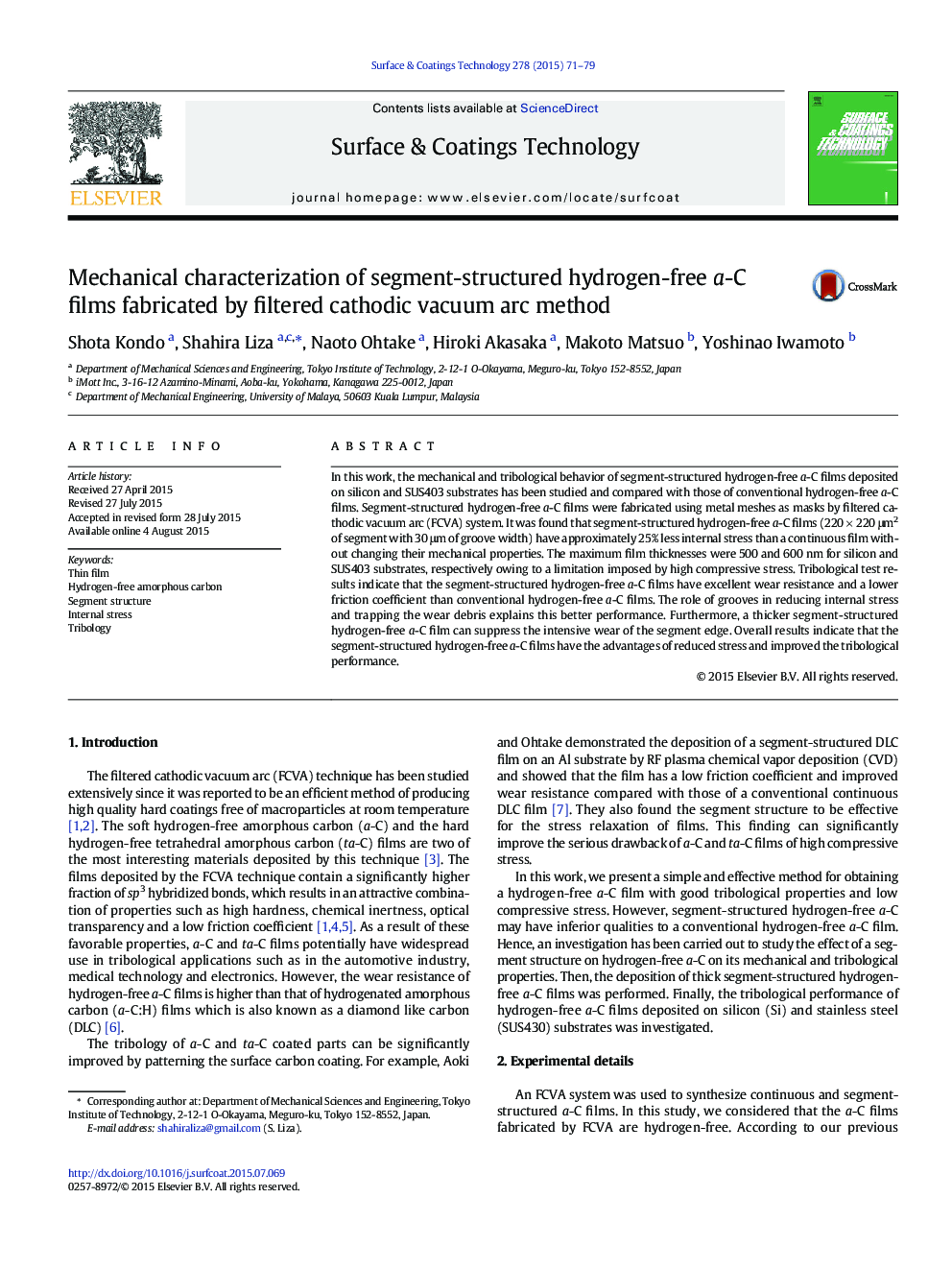| Article ID | Journal | Published Year | Pages | File Type |
|---|---|---|---|---|
| 1656929 | Surface and Coatings Technology | 2015 | 9 Pages |
•A segment-structured hydrogen-free a-C film was fabricated by the FCVA method.•The internal stress of the hydrogen-free a-C film was reduced by the segmented structure.•A low coefficient of friction and wear rate were obtained for the segment-structured hydrogen-free a-C film.•The wear resistance of the segment-structured hydrogen-free a-C film depends on the film thickness.•The results suggest a possible route for the further tribological improvement of surface coatings.
In this work, the mechanical and tribological behavior of segment-structured hydrogen-free a-C films deposited on silicon and SUS403 substrates has been studied and compared with those of conventional hydrogen-free a-C films. Segment-structured hydrogen-free a-C films were fabricated using metal meshes as masks by filtered cathodic vacuum arc (FCVA) system. It was found that segment-structured hydrogen-free a-C films (220 × 220 μm2 of segment with 30 μm of groove width) have approximately 25% less internal stress than a continuous film without changing their mechanical properties. The maximum film thicknesses were 500 and 600 nm for silicon and SUS403 substrates, respectively owing to a limitation imposed by high compressive stress. Tribological test results indicate that the segment-structured hydrogen-free a-C films have excellent wear resistance and a lower friction coefficient than conventional hydrogen-free a-C films. The role of grooves in reducing internal stress and trapping the wear debris explains this better performance. Furthermore, a thicker segment-structured hydrogen-free a-C film can suppress the intensive wear of the segment edge. Overall results indicate that the segment-structured hydrogen-free a-C films have the advantages of reduced stress and improved the tribological performance.
